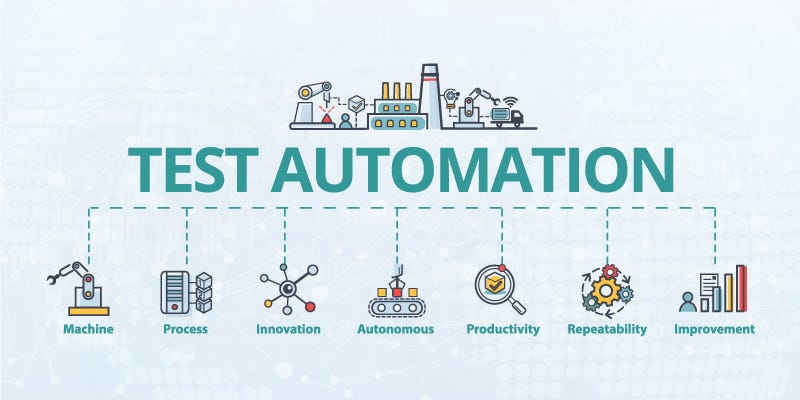Automation Testing Structures: Streamlining Complicated Testing Situations
Automation Testing Structures: Streamlining Complicated Testing Situations
Blog Article
From Handbook to Automated Testing: A Comprehensive Overview to Transitioning Smoothly and Efficiently
In the world of software testing, the shift from manual to automated processes has become a progressively crucial shift for companies looking for to improve effectiveness and accuracy in their testing practices. The trip from guidebook to automated testing is not without its obstacles, yet when come close to tactically and with a clear strategy in mind, the advantages can be substantial.
Benefits of Automated Checking
Automated screening offers countless advantages, boosting effectiveness and accuracy in software application development processes. One primary advantage is the considerable reduction in testing time. Automated tests can be run concurrently on multiple gadgets and operating systems, significantly accelerating the testing stage compared to hands-on screening. This increased effectiveness permits faster feedback on the top quality of the software, enabling developers to recognize and address problems without delay.
Moreover, automated screening ensures a higher level of precision in spotting problems. Because automated tests follow predefined scripts, human error is lessened, bring about more reputable test results. Consistency in screening is also boosted, as automated tests execute the same actions specifically each time they are run. This consistency is crucial in making certain that all capabilities of the software application are extensively evaluated, minimizing the likelihood of unseen pests sliding via to manufacturing.
Picking the Right Devices

Firstly, assess your goals and needs. Recognize the range of your task, the innovations entailed, and the skill collection of your group. This evaluation will certainly aid you identify the functions and capacities you need in your testing tools.
Secondly, think about the compatibility of the devices with your existing systems and processes. Smooth integration with your present software application growth lifecycle is vital to make sure a smooth shift to automation.
Additionally, review the scalability and flexibility of the tools. As your testing requires evolve, the tools must have the ability to adjust and fit changes efficiently.
Lastly, consider the support and neighborhood around the tools. Durable support and an energetic user area can give beneficial resources and support when applying automated testing. By thoroughly thinking about these aspects, you can pick the right devices that align with your demands and established the stage for a successful change to automated screening.
Creating Reliable Examination Scripts

When crafting test scripts, it is vital to consider the details requirements of the software being evaluated and make sure that the manuscripts address all important functionalities. Detailed and clear naming conventions for examination manuscripts and test situations can enhance readability and maintainability. In addition, integrating mistake handling mechanisms within the test manuscripts can help in recognizing and addressing problems quickly.
In addition, arranging test scripts right into modular components website here can improve reusability and scalability, decreasing redundancy and improving performance in test script maintenance. Routine evaluations and updates to evaluate manuscripts are essential to equal advancing software application demands and functionalities. By complying with these principles, testers can produce reliable and robust examination scripts that contribute dramatically to the success of automated screening procedures.
Integrating Automation Into Workflows
By effortlessly integrating automated screening tools like Selenium or Appium right into the software advancement lifecycle, teams can achieve faster responses on code changes, leading to quicker pest detection and resolution. This assimilation allows for continual testing throughout the advancement process, ensuring that any kind of concerns are determined early on, resulting in higher software program high quality. Appropriate combination of automation devices requires partnership in between development, screening, and procedures teams to establish a unified operations that optimizes effectiveness and performance in delivering premium software program products.
Guaranteeing a Smooth Change
Successfully transitioning to automated testing includes careful preparation and careful execution to lessen disturbances and optimize performance in the software program growth process - automation testing. To ensure a smooth transition, it is necessary to begin by conducting a complete assessment of the existing testing processes and recognizing locations where automation can bring one of the most substantial advantages. Involving with all stakeholders early in the procedure, including designers, testers, and project managers, is important for amassing helpful resources support and buy-in for the automation campaign
Interaction is vital throughout this transition stage. Clear interaction of the objectives, advantages, and expectations of automated testing helps to take care of any kind of resistance or problems that might develop. Furthermore, offering sufficient training and resources for employee to upskill in automation devices and methods is vital for ensuring an effective change.

Verdict
To conclude, transitioning from guidebook to automated testing uses numerous advantages, consisting of raised effectiveness and reliability. By picking the ideal devices, composing reliable examination manuscripts, and integrating automation perfectly right into workflows, organizations can make certain a smooth and successful transition. It is vital to accept automation as an important possession in software application testing processes to improve total top quality and performance.
In the world of software application testing, the change from guidebook to automated procedures has become an increasingly vital change for companies seeking to enhance performance and precision in their testing methods. Automated tests can be run simultaneously on numerous gadgets and operating systems, considerably speeding up the testing stage contrasted to hands-on testing. Uniformity in testing is also boosted, as automated tests execute the exact same steps specifically each time they are run.To make sure the successful execution of chosen screening devices, the creation of reliable test manuscripts plays an important function in confirming the performance and performance of automated procedures - automation testing. By following these concepts, testers can create efficient and robust examination scripts that contribute significantly to the success of automated screening procedures
Report this page